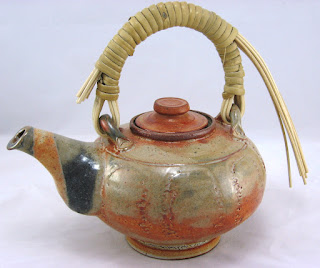After moving to New Hampshire in 2000, I took a ceramic course at the New Hampshire Art Institute (now part of the College of New Hampshire). There I found a group of potters who introduced me to Shino glaze. Shino glazes were used by Japan potters during the 16th century. They were known for their characteristic warm white finish, earthy tones, speckled surfaces, and subtle crawling effects. Unfortunately, the recipe for the glazes faded away around the late 17th century and became lost. Through extensive analysis of surviving Shino pottery scholars attempted to piece together the lost recipe. In the 1930s and 1940s, two Japanese potters, Toyozo Arakawa and Hajime Katō, developed the first modern Shino glaze by studying Momoyama Shino pots. Working independently in 1974, Virginia Wirt, a student of Warren MacKenzie at the University of Minnesota, developed a glaze formula that emulated the characteristics of the Japanese Shino glaze. ...





